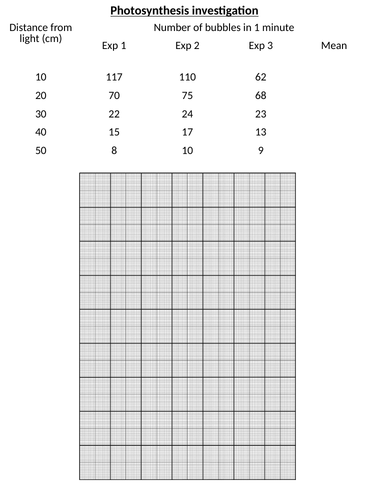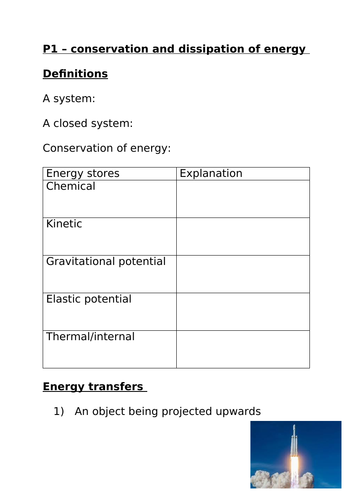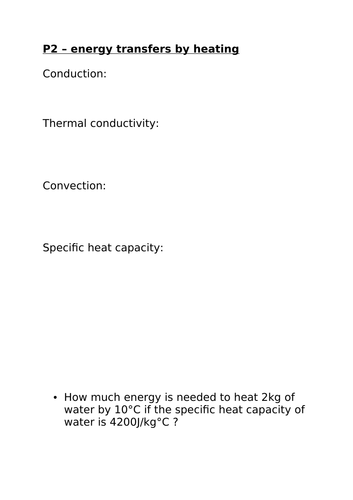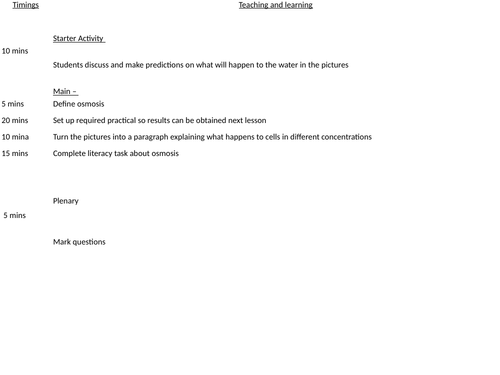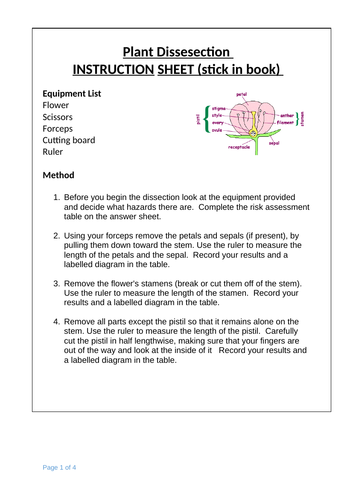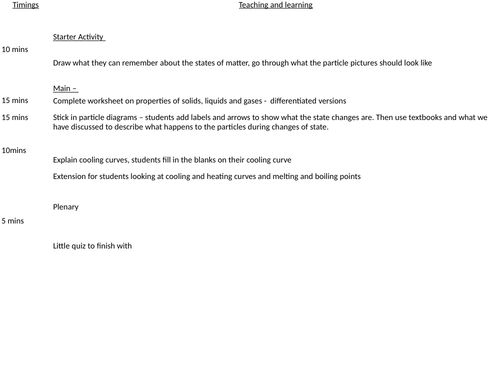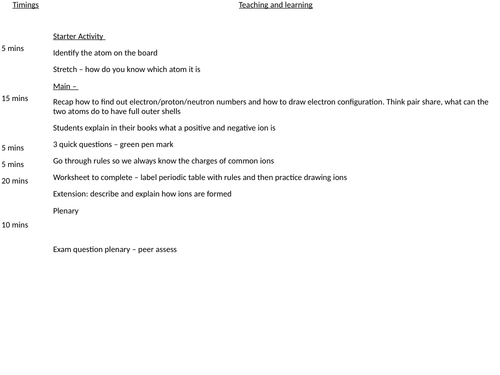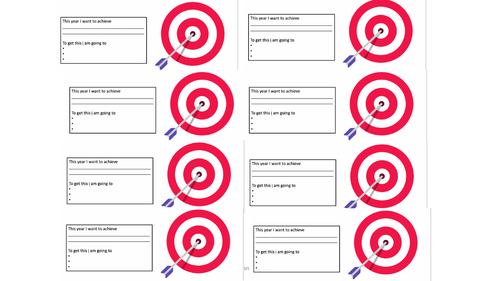
124Uploads
31k+Views
8k+Downloads
All resources

Transport in plants KS3
Objectives:
Describe how water is transported in plants
Explain how gases enter and leave plants
explain how some plants are adapted to limit water loss
Potential practical activity of celery with food colouring, not essential for the lesson however.
Starter: Recall questions, answers on the following slide
Main - potential celery practical
discuss the role of the root hair cells, recap students prior knowledge on this
Discuss how water enters a plant, answer questions. Answers on next page
Discuss how gases get in and out of a plant
Discuss adaptations plants have in warm temperatures
Plenary - Exam questions, answers included

Photosynthesis KS3
Starter: Recap of a plant cell.
Main - intro to photosynthesis, defintion and explaination
Video with questions to answer
Student task to explain photosynthesis with a clear success criteria given
Discuss how we can measure the rate of photosythesis
Pondweed practical could be done at this point, alternatively there is a online simulation attached.
Give students data, work out the mean, plot a graph write an evaluation. Work sheet for support given with results table and graph.
plenary - recap questions from earlier in the topic

P1 conservation and dissipation of energy summary
Summary powerpoint covering the P1 conservation and dissipation of energy topic from the AQA specification. (Kerboodle P1)
Contains a work booklet for students to use and make notes/do tasks/answer questions in whilst teacher runs through powerpoint.
Good for a summary/revision lesson.
All answers are on the powerpoint.

P2 energy transfer by heating
P2 - energy transfer by heating
Revision powerpoint for the topic, with a booklet for students to work through
P2 following the kerboodle specification

Chemistry paper one revision
Complete paper one Chemistry revision following the AQA trilogy specification.
Parts for higher only are highlighted.
work booklets to accompany powerpoint, which can be used in lessons or revision sessions.
Questions embedded in the powerpoint with answers for students to practice and focus on key concepts
My year 11s have found these benefical.

Filtering and evaporation KS3
Aimed at mixed ability year 8 - Some resources from TES
L1 - Starter: thinking about what sea water contains
Main: Think pair, share how to separate sea water
introduce key words
write a method/risk assessment for practical
Plenary: particle diagram of what happens during filtering
L2 - Main label equiptment in the diagrams and mark
Main: complete rock salt practical
Differntiated bronze/gold worksheets for students to work their way through
Plenary: one thing students learnt today
Marking sticker provided for the practical, if you wish to level the students work

Microscopes KS3
Aimed at a mixed ability year 7 class
5 mins
Differentiated questions to see what students know already about the microscope
Main
History of the microscope task – HA/LA version HA comprehension task about history, LA cut and stick to put in order
Show students parts on real microscope then cut and stick activity to label microscope parts – HA/LA version available as well as support sheets - go through answers
Extension: magnification calculations
Plenary
5 mins
Tweet something you have learnt today

B1.7 Osmosis
Aimed at a mixed ability year 9 class
Starter: Discuss and make a prediction about where the water willl move
bring it together with a definitoin of osmosis
Main: Set up practical so results can be looked at next lesson - method on slide
go through what happens to cells in different concentrations
differentiated literacy task
Plenary: mark questions

B1.10 exchange materials
Aimed at a mixed ability year 9 class
Starter: reflect on previous diffusion practical
Main: explain surface area:vol, do practic equestions and mark
do research task to explain how surfaces are specialised
extension: checkpoint follow ups from kerboodle
Plenary" tweet what theyve learnt

C1.4 fractional distillation and paper chromatography
aimed at a mixed ability year 9 class
Starter Activity
Match key words to definitions – go through answers
Main –
Students watch demo of fractional distillation. Explain uses/whats happening at each point. Students the write an explaination of how they can obtain pure ethanol
Set up chromatography experiment, whilst waiting for it to develop write a step by step method for the practical. Go over basics, this will be revisited as chromatography is a required practical.
Plenary
Tweet one thing they have learnt today

C1.7 Ions, atoms and isotopes
aimed at mixed ability year 9 class
Starter Activity
Differentiated Bronze/silver/gold questions from previous lesson
Main –
Think, pair, share – how big is an atom. Copy down the size of an atom and nucleus intho their books
Copy key words need to be able to define ion and isoptope for level 4
Explain that atoms can lose or gain electrons. And what happens if they do. Students make notes on this, then go through a few examples.
Students practice working out electron/proton/neutron for ions
Extension task for students who finish
Explain what an isotope is, do one worked example of finding proton/neutron numbers then their go at finding how many protons and neutrons are in carbon isotopes
Exam practice if time
Plenary
Identify whether the pictures are atoms, ions or isotopes

Structure of a plant
Aimed at KS3 students.
This lesson recaps KS2 prior knowledge on the structure of a plant. Before moving onto KS3 content about structure and function of parts of the plant, followed by a plant dissection, accompanied by worksheets.

Pure and Impure
Suitable for KS3
Includes:
Recall starter
Pure and impure including particle diagrams
Pure and impure boiling points
practical investigation to investigate purity

C1.6 structure of the atom
aimed at a mixed ability year 9 class
Starter Activity
Put atom structures in the correct order thinking back to last lesson
Main –
Work through work sheet in steps. To ensure maximum understanding
Chase the element – race task to find out what each element around the room is, identifying proton neutron and electron number and matching it with an element on the periodic table
Make a model of an atom using string, and card (cut card into circles use string to attach them together)
Plenary
Tweet what you’ve learnt tday

C3.1 States of matter - Foundation
Aimed at a foundation class
Starter Activity
Draw what they can remember about the states of matter, go through what the particle pictures should look like
Main –
Complete worksheet on properties of solids, liquids and gases - differentiated versions
Stick in particle diagrams – students add labels and arrows to show what the state changes are. Then use textbooks and what we have discussed to describe what happens to the particles during changes of state.
Explain cooling curves, students fill in the blanks on their cooling curve
Extension for students looking at cooling and heating curves and melting and boiling points
Plenary
Little quiz to finish with

C3.2 atoms into ions - Foundation
aimed at a lower ability class
Starter Activity
Identify the atom on the board
Stretch – how do you know which atom it is
Main –
Recap how to find out electron/proton/neutron numbers and how to draw electron configuration. Think pair share, what can the two atoms do to have full outer shells
Students explain in their books what a positive and negative ion is
3 quick questions – green pen mark
Go through rules so we always know the charges of common ions
Worksheet to complete – label periodic table with rules and then practice drawing ions
Extension: describe and explain how ions are formed
Plenary
Exam question plenary – peer assess

C3.5 covalent bonding - foundation
aimed at a lower ability class
Starter Activity
Mark homework
Main –
Think pair share – spot the difference between ionic and covalent bonding. Then write down definition of covalent bonding
Watch video, only watch until 2 minutes. Answer questions whilst video is going. Goo through and green pen answers after
Go through the two examples on the board and show what happens
Students then have a go at completing their worksheet to show covalent bonds
Extension: decide if the compounds are ionic or covalent and explain how they know
Plenary
Plenary, fill in the gaps and go over answers

C3.4 Giant ionic structures - foundation
aimed at a lower ability class
Starter Activity
Using previous knowledge make predictions about ionic compounds
Main –
Go through and discuss giant ionic lattices
Students move around the room to find the information sheet to find out if there prediction was correct or not and why
Practical with a dissolved ionic compound to show it can conduct electricity. Make sure say that molten ionic compounds too and what a molten ionic compound is
Plenary
Exam question plenary


